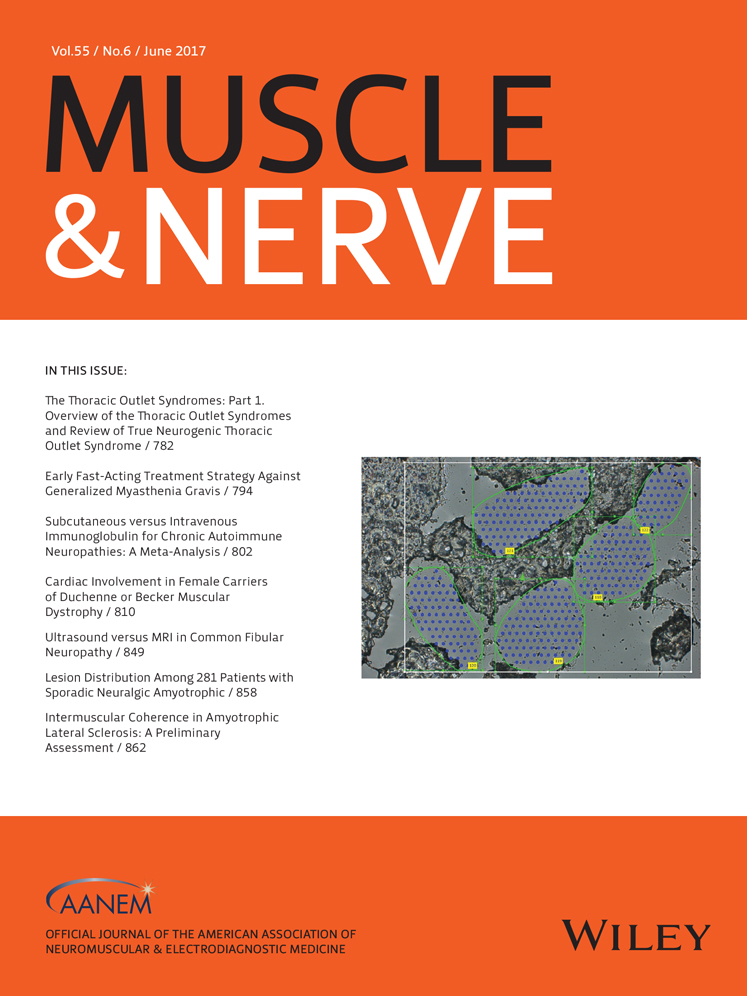Selectivity of conventional electrodes for recording motor evoked potentials: An investigation with high-density surface electromyography
This study was supported in part by grants from the Natural Sciences and Engineering Research Council of Canada (to L.A.B. and S.J.G.), a Vanier Graduate Canada Scholarship (to A.G.), the Canadian Institutes of Health Research (to S.P.), and the Michael Smith Foundation for Health Research (J.L.N.). L.A.B. receives salary support from the Canada Research Chairs.
ABSTRACT
Introduction
The objective of this study was to determine whether motor evoked potentials (MEPs) elicited with transcranial magnetic stimulation and measured with conventional bipolar electromyography (EMG) are influenced by crosstalk from non-target muscles.
Methods
MEPs were recorded in healthy participants using conventional EMG electrodes placed over the extensor carpi radialis muscle (ECR) and high-density surface EMG (HDsEMG). Fifty MEPs at 120% resting and active motor threshold were recorded. To determine the contribution of ECR to the MEPs, the amplitude distribution across HDsEMG channels was correlated with EMG activity recorded during a wrist extension task.
Results
Whereas the conventional EMG identified MEPs from ECR in >90% of the stimulations, HDsEMG revealed that spatial amplitude distribution representative of ECR activation was observed less frequently at rest than while holding a contraction (P < 0.001).
Conclusions
MEPs recorded with conventional EMG may contain crosstalk from non-target muscles, especially when the stimulation is applied at rest. Muscle Nerve 55: 828–834, 2017




